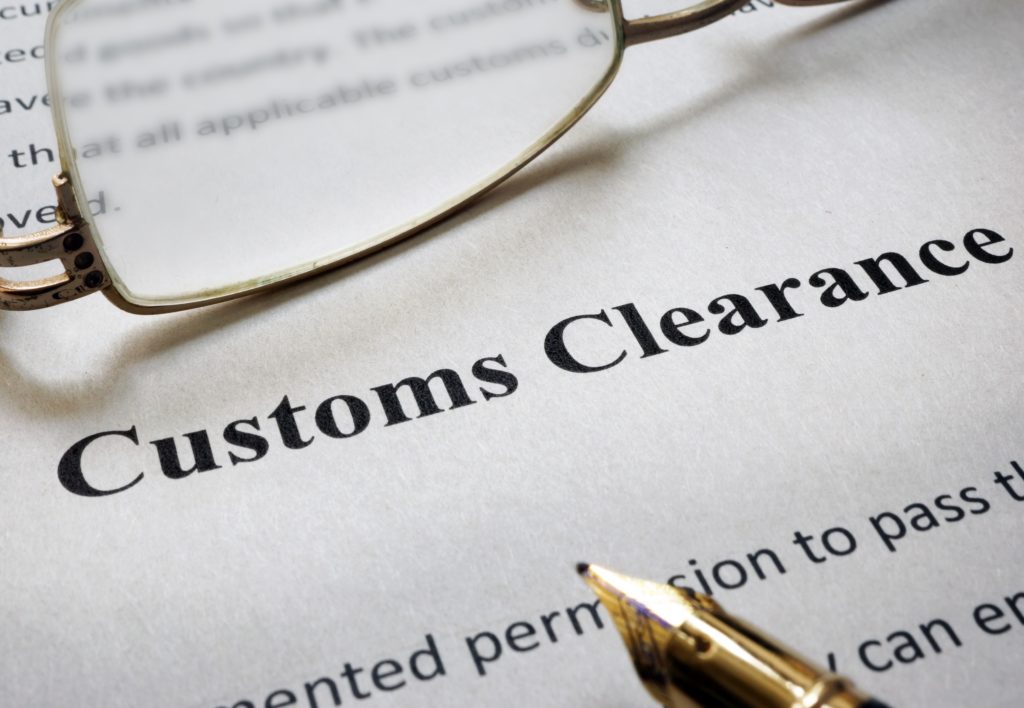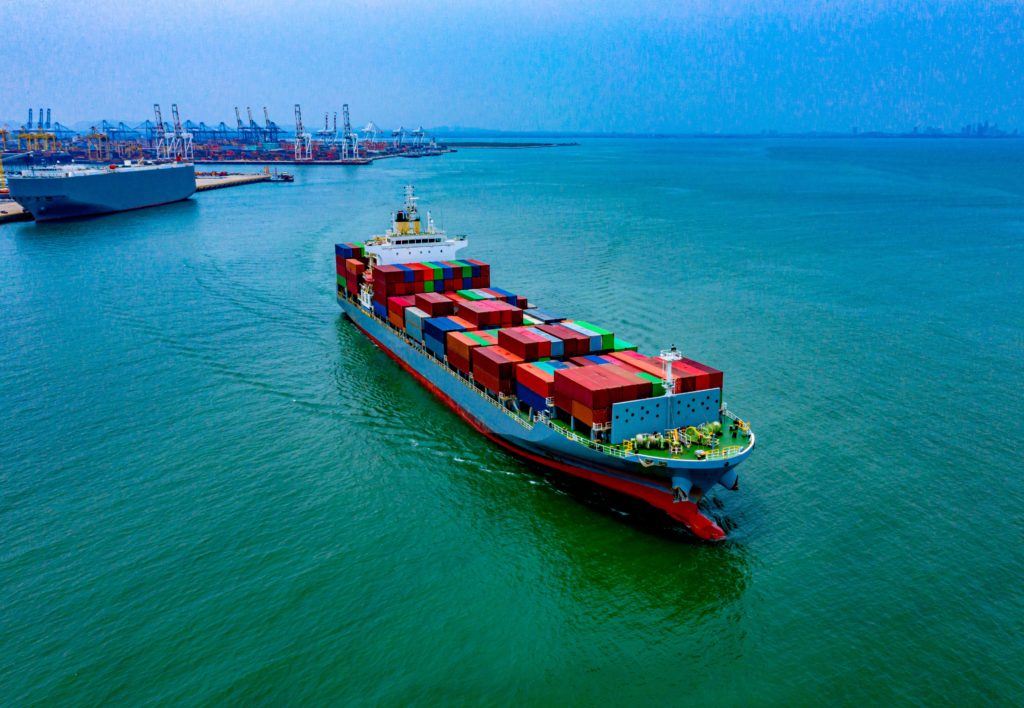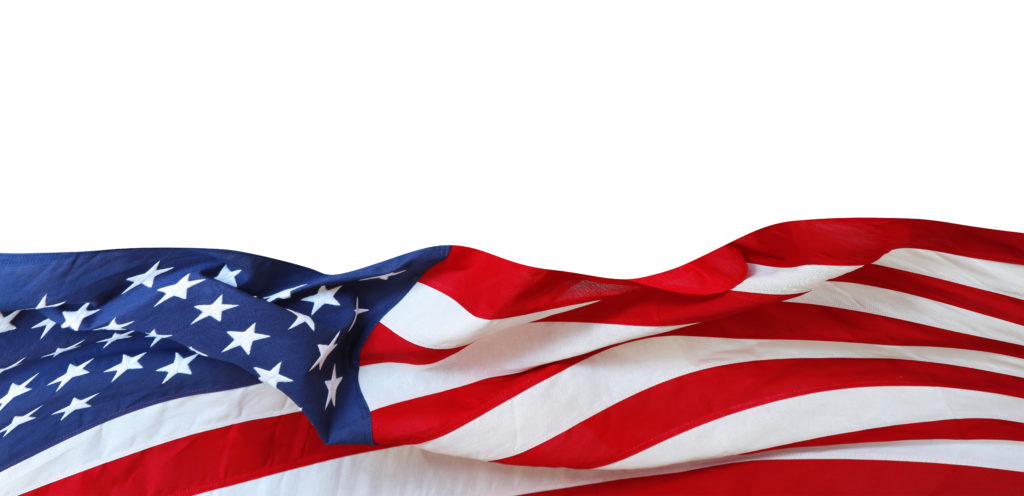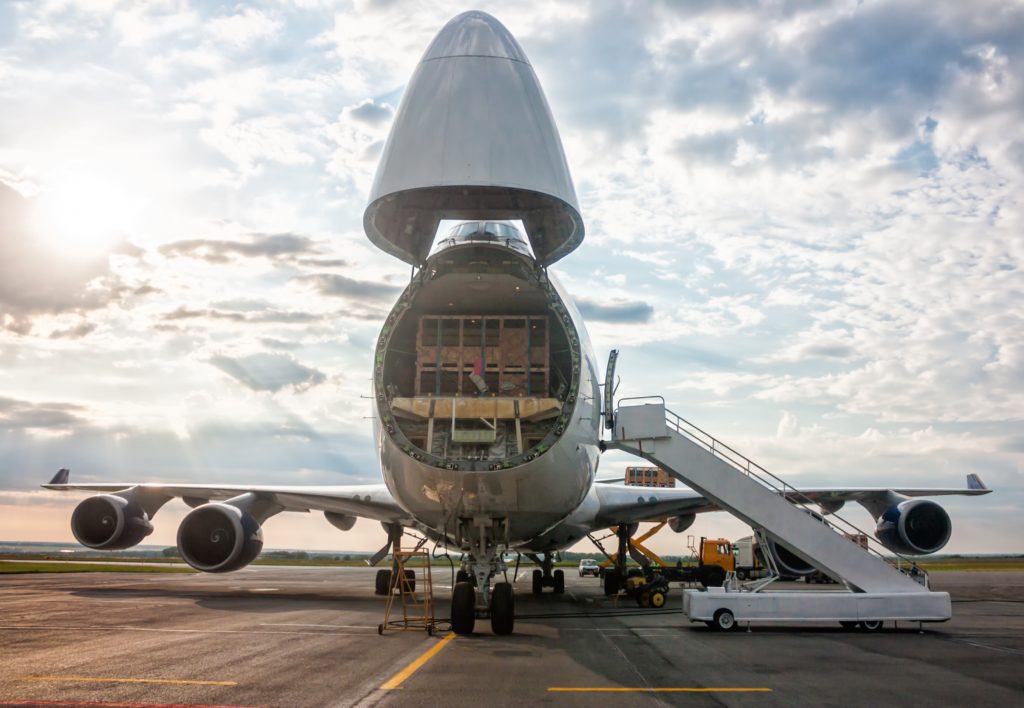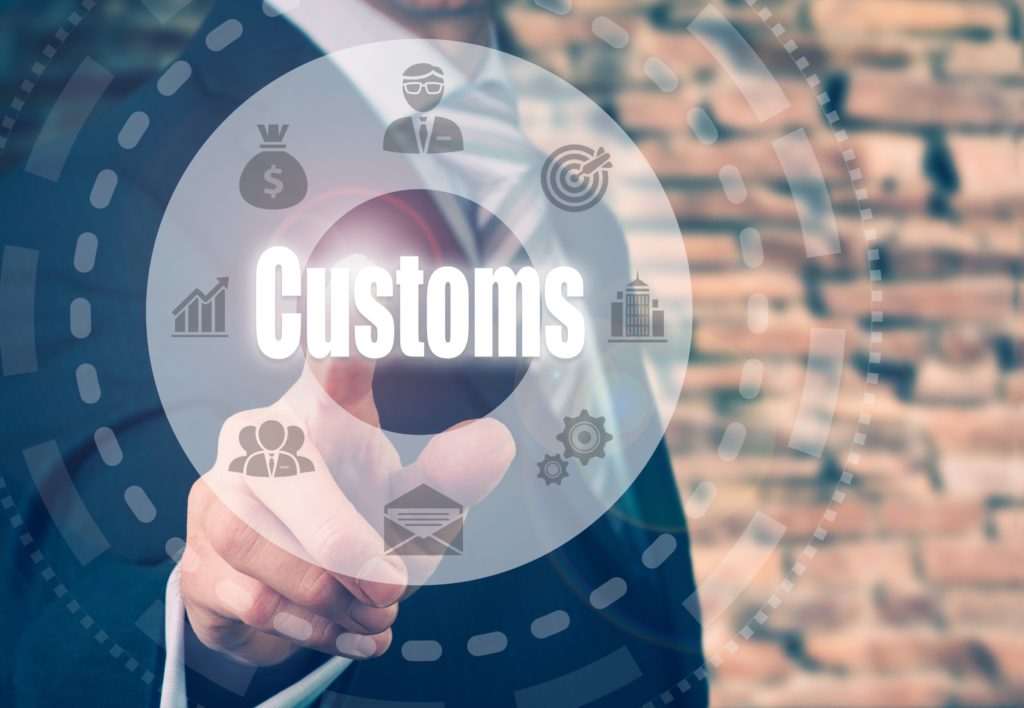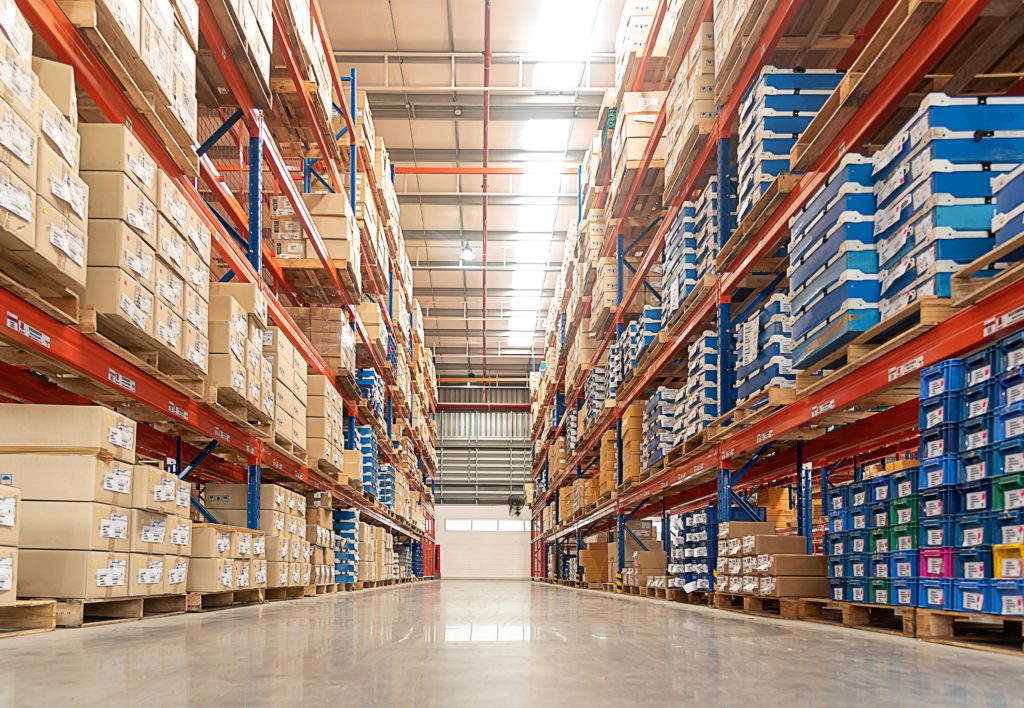US Customs Clearance
US Customs Clearance of Imported Merchandise
Introduction to the CBP Import Process Presented by CBP
U.S. Customs and Border Protection (CBP) has developed this informational video that addresses the Import Process. The video is for new and existing importers to learn the process of importing goods and merchandise from foreign countries into the United States, promoting the necessary steps to ensure compliance with U.S. laws and regulations.
Entry of Imported Goods into the United States
When a shipment reaches the United States, the importer of record (i.e., the owner, purchaser, or licensed customs broker designated by the owner, purchaser, or consignee) will file entry documents for the goods at the port of entry. Imported goods are not legally entered until after the shipment has arrived within the port of entry, delivery of the merchandise has been authorized by CBP, and estimated duties have been paid.
It is the importer of record's responsibility to arrange for examination and release of the goods. When importing your product, you must first determine the entry type to be filed with Customs and Border Protection (CBP). Entering merchandise is a two part process consisting of:
- Entry – Filing the documents necessary to determine whether merchandise may be released from CBP custody and;
- Entry Summary – Filing the documents that contain information for duty assessment and statistical purposes.
Both of these processes can be accomplished electronically via the Automated Broker Interface (ABI) program of the Automated Commercial Environment (ACE).
In-Depth Coverage: Country of Origin
- Country of Origin of Imported Merchandise
- Customs Ruling: Country of Origin
- Country of Origin: Food Products
- Country of Origin: Chemical and Pharmaceutical Products
- Country of Origin & Country of Manufacture: CBP vs. FDA
- Country of Origin: Substantial Transformation or Country of Assembly Test
- Country of Origin and Free Trade Agreement
- Country of Origin and Section 301
Entry Documentation
Merchandise for which entry is required will be entered within 15 calendar days after landing from a vessel, aircraft or vehicle, or after arrival at the port of destination in the case of merchandise transported in bond. These documents are:
- CBP Form 3461 (appropriately modified), or its electronic equivalent, except that CBP Form 7533 (appropriately modified), or its electronic equivalent, in duplicate, may be used in place of CBP Form 3461 for merchandise imported from a contiguous country. Evidence of right to make entry,
- Commercial invoice or a pro forma invoice when the commercial invoice cannot be produced,
- Packing lists, if appropriate,
- Other documents which may be required by CBP or other Federal, State, or local agencies for a particular shipment.
Entry summary Documentation
Following the presentation of the entry, the shipment may be examined, or examination may be waived. The shipment is then released if no legal or regulatory violations have occurred. “Entry Summary” refers to the documentation necessary to enable U.S. Customs and Border Protection to assess duties, collect statistics, and determine whether other requirements of law have been met.
Entry summary documentation is filed and estimated duties are deposited within 10 working days of the entry of the merchandise. The entry package will be returned to the importer, broker, or his authorized agent after merchandise is permitted release and will be used for the preparation of entry summary.
Entry summary documentation consists of:
- Entry summary (CBP Form 7501),
- Other invoices and documents necessary to assess duties, collect statistics, or determine that all import requirements have been satisfied. This paper documentation can be reduced or eliminated by using features of the ABI.
In-Depth Coverage: Importing Medical Device
Special Permit for Immediate Delivery
Merchandise may be released under a special permit for immediate delivery in the following circumstances:
(a) Contiguous countries
At the discretion of the port director, merchandise arriving by land from Canada or Mexico may be released under a special permit for immediate delivery.
(b) Fresh fruits and vegetables
An application for a special permit for immediate delivery may be made for the transportation of fresh fruits and vegetables for human consumption arriving from Canada or Mexico to the importer's premises within the port of importation, but removed from the area immediately contiguous to the border.
(c) Agency of U.S. Government. Merchandise may be released under the immediate delivery procedure if the shipment is consigned to or for the account of any agency or office of the United States Government, or to an officer or official of any such agency in his official capacity.
(d) Articles of a trade fair. Articles for a trade fair may be released under the immediate delivery procedure.
(e) Quota-class merchandise
(1) Tariff rate quotas. At the discretion of the port director, merchandise subject to a tariff-rate quota may be released under a special permit for immediate delivery.
(2) Absolute quotas. At the discretion of the port director, perishable merchandise of a class approved by CBP Headquarters which is subject to an absolute quota may be released under a special permit for immediate delivery for removal to the importer's premises, or to any other location approved by the port director, until an entry summary is properly presented.
Read more: Release of Quota-Class Merchandise under a Special Permit for Immediate Delivery
In-Depth Coverage: Importing Food Products
- What is FDA Food Safety Modernization Act (FSMA)?
- Prior Notice of Imported Foods
- FDA Food Facility Registration
- Risk-Based Preventive Controls for Human Food
- Risk-Based Preventive Control for Animal Food
- Protect Food against Intentional Adulteration
- What is Foreign Supplier Verification Program (FSVP)?
- What is FSMA Produce Safety Rule?
Type of Entry
Goods may be entered for consumption, entered for warehouse at the port of arrival, or they may be transported in-bond to another port of entry and entered there under the same conditions as at the port of arrival.
Consumption Entry
A consumption entry is a type of entry used when products are imported for use in the United States and going directly into United States commerce without any restrictions of time or use placed on them, which covers about 95% of all entries.
“For use in the United States” means for commercial, business or personal purposes. Products may only be entered by their owner, purchaser, or a licensed customs broker. Once the shipment is presented for entry, it may be examined by a government agency.
A consumption entry may be formal or informal depending on the circumstances. However, the majority of consumption entries are formal and the goods that are being imported for commercial purpose and/or “resale”, which requires filing an Entry Summary (CBP 7501) and acquiring a CBP bond (CBP 301).
This covers a broad range of commodities (i.e. textiles, electronics, food etc.) entering the U.S. For example, a commercial shipment of textiles being shipped from China to a distributor in the United States would be a formal consumption entry. However, if the textiles were going to a warehouse prior to the distributor, a formal warehouse entry would have to be filed.
Consumption entries for goods entering the U.S. as informal entries are not necessarily filed on a CBP 7501. Various forms are used for informal consumption entries and usually no CBP bond (CBP 301) is required. Informal consumption entries generally cover shipments intended for the importers' personal use or commercial goods entering the U.S. via air, ship or mail for consumption that are valued at $2,500 or less.
This does not include commodities subject to other federal agency regulations. For example, a shipment of furniture being shipped from Indonesia to a homeowner in the United States valued at $6,000 would most likely be an informal consumption entry because the goods are intended for their personal use.
Informal Entry
Informal entries, as defined by CBP regulations, are usually valued at less than $2,500 (value subject to change), and usually do not require a bond. Some products are restricted from informal entry (for example, high-risk products), regardless of value.
Formal Entry
Formal entries generally have an aggregate value of $2,500 or more and are required to be covered by a bond.
Mail Entry
Importation via U.S. Postal Service (commercial senders) is subject to the same requirements and restrictions as importation by any other entry types.
In-Depth Coverage: Importing Cosmetics
Other Entry Tpes
In addition to consumption entries, other entry types are used to clear goods entering the United States. Some entry types include warehouse, transportation, temporary importation under bond (TIB), permanent exhibition, trade fair, carnets, drawback, foreign trade zone (FTZ), vessel repair, and appraisement of FTZ's entries.
Below are examples of other entry types.
Entry for Warehouse
If one wishes to postpone release of the goods, they may be placed in a CBP bonded warehouse under a warehouse entry. The goods may remain in the bonded warehouse up to five years from the date of importation. At any time during that period, warehoused goods may be re-exported without paying duty, or they may be withdrawn for consumption upon paying duty at the duty rate in effect on the date of withdrawal. If the goods are destroyed under CBP supervision, no duty is payable.
Entry for Rewarehouse
When merchandise which has been withdrawn from warehouse for transportation to another port has arrived at the port of destination, it may be entered for rewarehouse by the consignee named in the withdrawal.
Immediate Transportation (IT)
An IT entry allows bonded merchandise to arrive at a U.S. port, with another port in the U.S. as the final destination (the declared port of entry).
Transportation & Exportation (T&E)
A T&E entry allows goods to be transported through the CBP territory of the U.S. under bond and then exported intact.
In-Depth Coverage: USDA-Regulated Products
- Importing USDA-Regulated Food Products
- Import Regulation by USDA Agricultural Marketing Service (AMS)
- Food Products – FDA or USDA Regulated
- Country of Origin Labeling
- Importing Animals, Animal Products, and Biologics into the US
- Importing Meat, Poultry, and Egg Products into the US
- Labeling and Marking of Imported Meat, Poultry, and Egg Products
- USDA National Organic Program (NOP)
- Agricultural Safeguards and USDA Licensing
Temporary Importation under Bond (TIB)
A TIB entry allows goods to be imported duty-free up to one year with a guarantee the goods will be exported or destroyed at the end of the bond period. The importer posts a bond for twice the amount of the duty. A TIB entry may be used when an article for repair is imported and will subsequently be exported.
Foreign Trade Zone (FTZ)
A Foreign Trade Zone (FTZ) is a secure area under the supervision of CBP that is physically located within the United States but is considered to be outside of the Customs territory of the United States for the purposes of payment of duty. Therefore, products brought into an FTZ are otherwise not considered imported or offered for import.
Under FTZ procedures, foreign and domestic merchandise may be admitted into FTZs for operations such as storage, exhibition, manipulation, destruction, assembly, manufacture and processing, without being subject to formal CBP entry procedures and payment of duties, unless and until the foreign merchandise enters the Customs territory for domestic consumption. If the merchandise does not enter U.S. commerce, then no duties or taxes are paid on those items.
Unentered Goods
If no entry has been filed for the goods at the port of entry, or at the port of destination for in-bond shipments, within 15 calendar days after their arrival, the goods may be placed in a general-order warehouse at the importer’s risk and expense. If the goods are not entered within six months from the date of importation, they can be sold at public auction or destroyed. Perishable goods, however, and goods subject to depreciation and explosive substances may be sold sooner.
In-Depth Coverage: Marketing and Advertising Compliance
- Federal Trade Commission (FTC) Advertising Rules
- Made in USA Standard
- FTC Regulation on Environmental Claims
- Adverting and Marketing on the Internet
- Label Claims for Conventional Foods and Dietary Supplements
- Dietary Supplement Advertising: What is FTC's Truth-in-Advertising Law?
- USDA Country of Origin Labeling (COOL)
- FTC Rules & Regulations on Food Advertisement
Quick Link To U.S. Customs & Import Requirements
Customs Clearance and Import Requirements
- Entry of Imported Merchandise
- What is Section 321 Entry?
- What is Automated Commercial Environment (ACE)
- What is an Automated Broker Interface (ABI)?
- Who is Ultimate Consignee?
- What is Non-Resident Importer Program?
- Country of Origin of Imported Merchandise
- What is the Country of Assembly?
- What is the FDA's Country of Manufacture?
- Marking of Country of Origin on U.S. Imports
- What is Customs Bond?
- Reconciliation Prototype and Bond Rider
- Who Needs a Customs Broker?
- What is Customs Ruling Program?
- Classification of Imported Goods
- How is imported merchandise appraised?
- What are Import Quotas?
- What are Trade Remedy Duties?
- Antidumping Duty (AD) and Countervailing Duty (CVD)
- What is Foreign Trade Zone (FTZ)?
- What is Importer Security Filing (ISF)?
- What is Temporary Importation under Bond (TIB)
- What is In-Bond Process?
Guidance on customs & logistics solution for traditional and e-commerce importers and exporters
Importer Security Filing (ISF)
An ISF is required when cargo (ocean only) laden on vessel at a foreign port is destined for shipment to the U.S. Under ISF rule, some importing information and details regarding cargo must be transmitted to the CBP at least 24 hours before goods are loaded onto the vessel.
Customs Clearance
All goods imported into the U.S. are required to be declared to CBP. Our customs broker will help you stay in compliance with customs laws and regulations and clear your goods quickly and efficiently with our electronic Automated Commercial Environment (ACE) and Automated Broker Interface (ABI) Single Window System.
Freight Forwarding
Looking for a freight forwarding partner? To move your cargo from its current location through customs to its final destination we will partner with you to find the best way for your business. Whatever your transportation, logistics or customs clearance needs, we will do our best to customize a solution for your needs.
Warehousing & Distribution
Our warehouse facility offers great potential for serving as a regional hub with over 145,000 SF storage capacity close to Los Angeles Airport & Los Angeles/Long Beach Sea port. With our extensive experience in freight services, your import/export cargo will be handled quickly and effectively.
Section 321 Entry
Section 321 entry allows importing free of duty and tax for shipments imported by one person on one day having a fair retail value in the country of shipment not more than $800. We provide our resident and non-resident clients with dedicated ACE eManifest solutions for Section 321 entry of all modes of transportation.
E-Commerce
The Internet has made it easy to find and purchase items from almost anywhere in the world. Our e-commerce experts will help you find the right solution for your international transportation, customs clearance, and delivery to your final destination. We also provide value-added repackaging, warehousing and distribution services.
Non-resident Importer Program
If you want to sell your products in U.S. marketplaces, but you are a business owner located outside of the U.S. and do not have an entity or presence in the U.S., you need to be established as a Foreign Importer of Record before your products can be imported into the U.S. We can help you.
FDA-Regulated Products and Import Requirements
- What is Food Safety Modernization Act (FSMA)?
- Prior Notice of Imported Foods
- Food Facility Registration
- Risk-Based Preventive Controls for Human Food
- Risk-Based Preventive Control for Animal Food
- Standards for the Growing, Harvesting, Packing, and Holding of Produce for Human Consumption
- What is Foreign Supplier Verification Program (FSVP)?
- Protect Food against Intentional Adulteration
- FDA Regulated Product in Foreign Trade Zone (FTZ)
- Entry Review Process for FDA Regulated Products
- Country of Origin VS Country of Manufacture
- Foods Regulated by FDA or USDA: What is the Difference?
- Label and Labeling Claims for Conventional Food and Dietary Supplements
- What is USDA Country of Origin Labeling (COOL)?
- Import for Export of FDA Regulated Products
- FDA Regulated Products in Personal Baggage or Sending by Mail or Courier
- International Mail Facility (IMF) and FDA Regulation
- Importing Biological Product Regulated by CBER
- Importing Cosmetics and Voluntary Cosmetic Registration Program (VCRP)
- Importing Drugs into the U.S.
- Importing OTC Drugs into the U.S.
- Importing Veterinary Drugs into the U.S.
- Importing Tobacco Products into the U.S.
- Importing Medical Devices into the U.S
- Importing Food Products into he U.S.
- Importing Radiation-Emitting Products into the U.S.
Design your own logistics
To move your cargo from its current location through customs to its final destination we will partner with you to find the best solution for your business.

